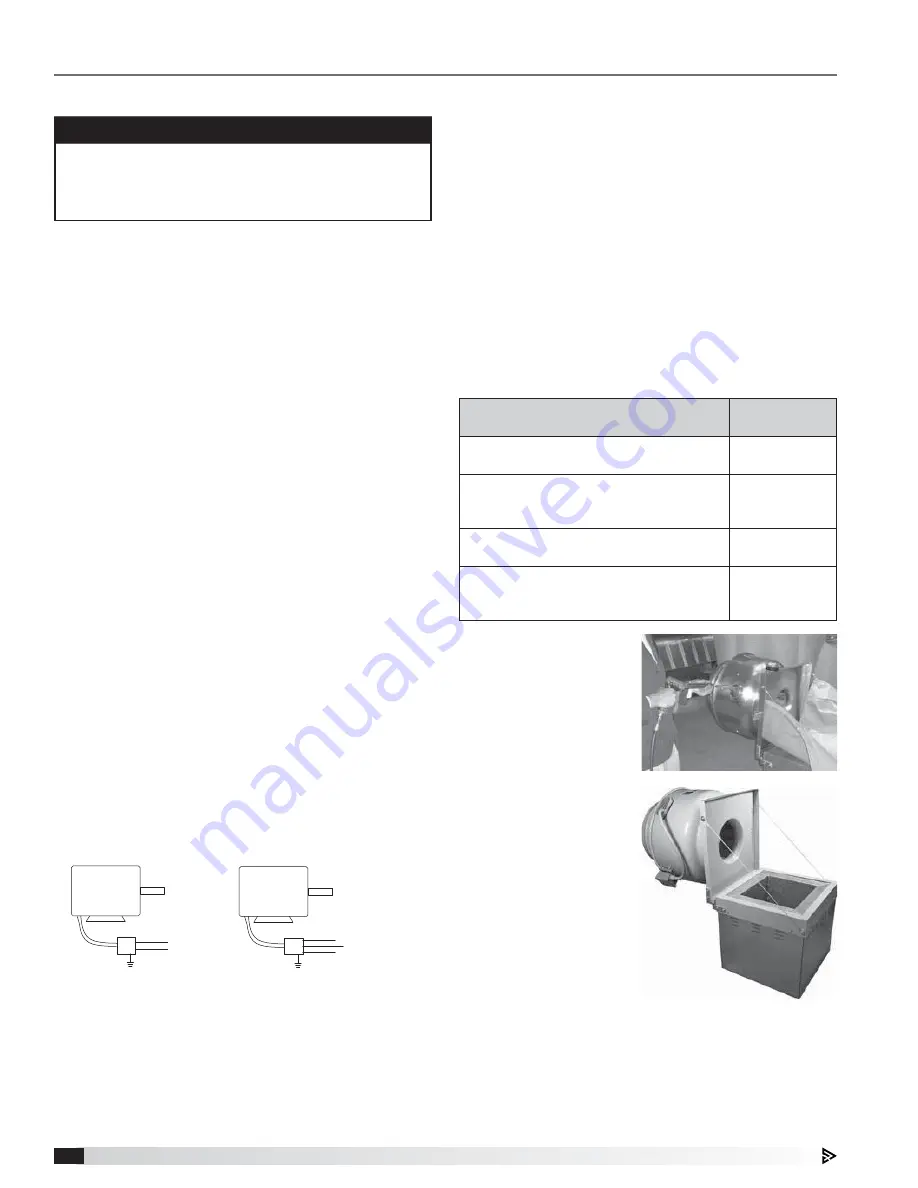
Steel Grease Fan
4
Figure 5
15. Hinged Base:
During installation
of the hinged base,
it is important not
to allow the fan to
go beyond 90º, see
Figure 5.
Table 1: Exhaust System Inspection Schedule
Type or Volume of Cooking
Frequency
Check
Systems serving solid fuel cooking
operations
Monthly
Systems serving high-volume cooking
operations, such as 24 hour cooking,
char broiling, or wok cooking
Quarterly
Systems serving moderate-volume
cooking operations
Semiannually
Systems serving low-volume cooking
operations, such as churches, day camps,
seasonal business, or senior centers
Annually
Figure 4
14. Clean-Out Port:
Position the
clean-out port so
it is on the side of
unit when hinged
open, see Figure 4.
Installation
Typical Roof Mounting Installation
1. On the roof surface, cut an appropriate sized hole
and follow manufacturer’s instructions on curb
installation. Caulk and flash the curb to ensure a
water tight seal.
2. Remove motor cover. Access to the motor
compartment is accomplished by removing the
screws as shown on page 2, Figure 2.
3. Use the lifting lugs on the drive frame to lift and
place the unit on top of roof curb. Refer to page 2,
Figure 1.
4. Secure fan to curb using a minimum of suitable
fasteners. Shims may be required depending upon
curb installation and roofing material.
5. Verify power line wiring is de-energized before
connecting fan motor to power source.
6. For commercial kitchen applications, the electrical
supply must enter the motor compartment through
the breather tube. For other non-flammable
applications, the electrical supply should also be
routed through the breather tube.
7. Connect power supply wiring to the motor as
indicated on the motor nameplate or terminal box
cover. Check the power source for compatibility
with the requirements of your equipment.
8. Check fan wheel for free rotation, recenter if
necessary. Check set screw(s) for tightness.
9. Check all fasteners for tightness.
10. Mount and wire safety disconnect switch under
motor cover. Wire control switches at ground level,
refer to Figure 3.
11. Replace motor cover.
MOTOR
L1
115/208-230/60/1
208-230/460/60/3
MOTOR
J-BOX
J-BOX
SUPPLY VOLTAGE
SUPPLY VOLTAGE
L2
L1
L2
L3
Figure 3 - Typical Wiring Diagram
IMPORTANT
Installation, troubleshooting and parts replacement
are to be performed only by qualified personnel.
Consult and follow all applicable national, state and
local codes as they will supercede this document.
12. A drain trough is provided on all fans for single-
point drainage of water and residue. Some means
for collection of this residue must be provided,
either a container directly under the trough or use
of an adapter and pipe to carry the residue to a
remote collection point. An optional grease trap
with water separator baffle is available from your
representative.
13. A clean-out port and hinged base are also provided
on all units. They aid the cleaning process through
additional access to the wheel. The fan is designed
for the worst cooking conditions, such as char
broilers, solid fuel cooking or oriental cooking.
Table 1 shows the suggested exhaust system
inspection schedule published in NFPA 96.






























